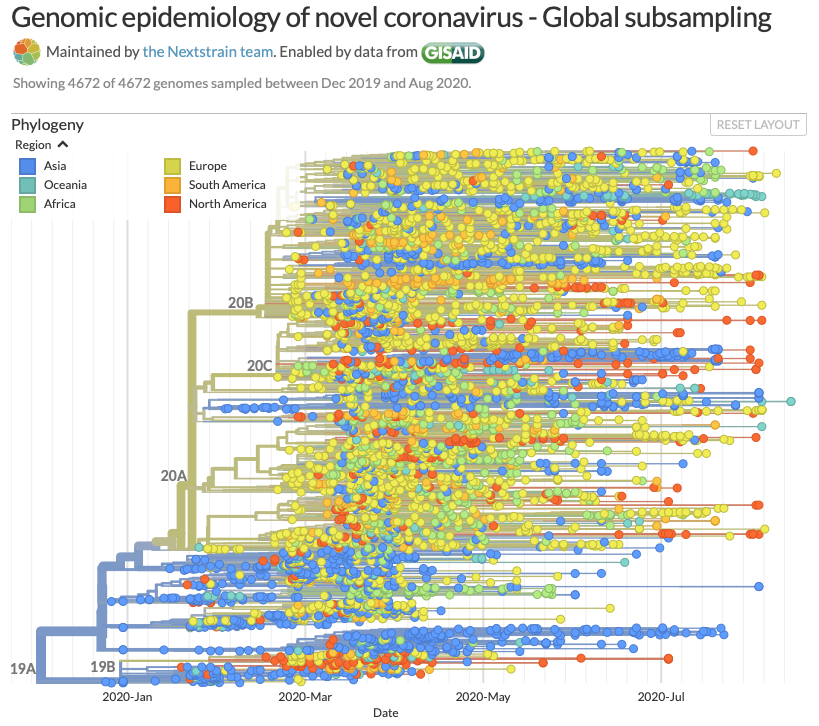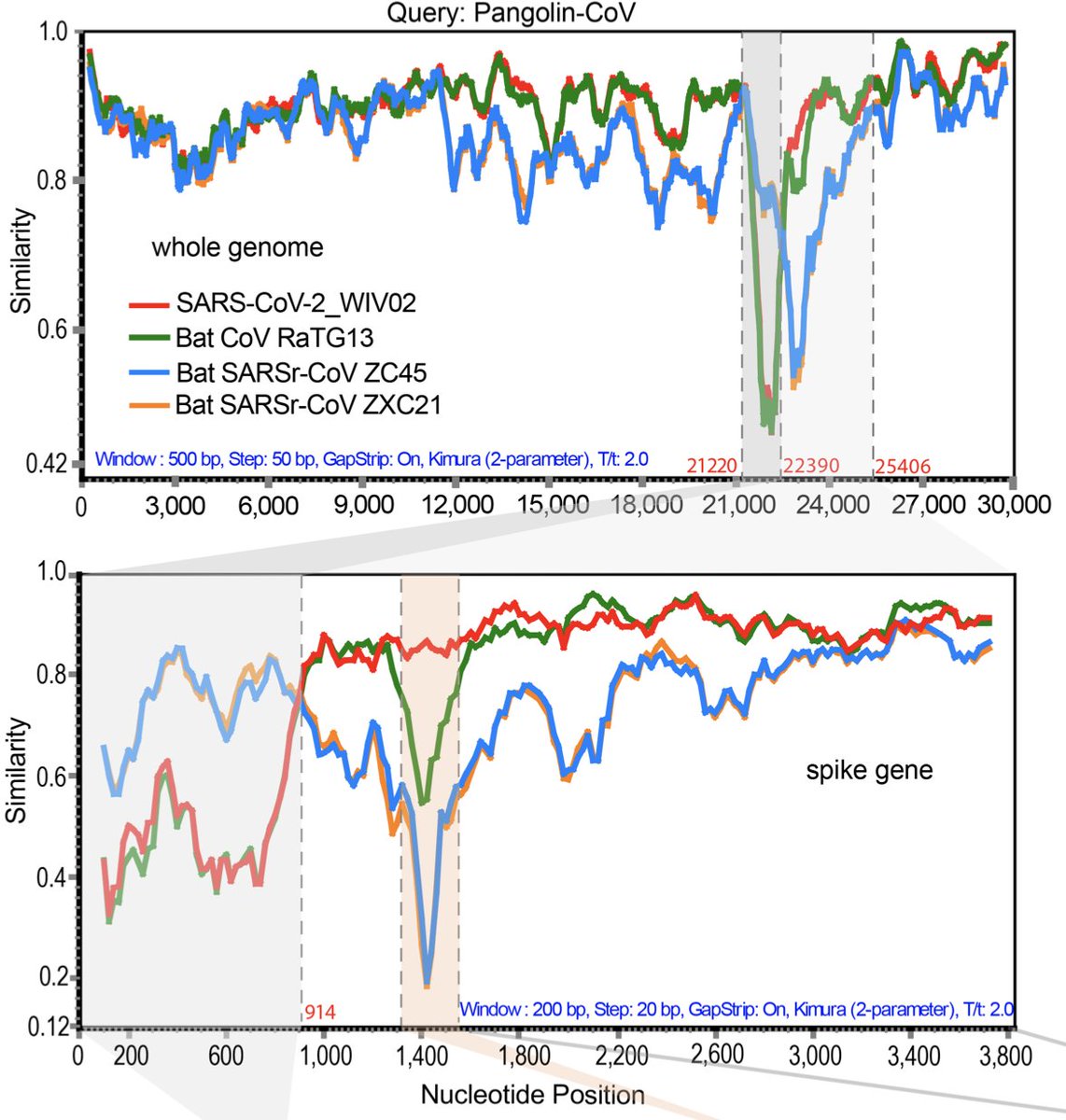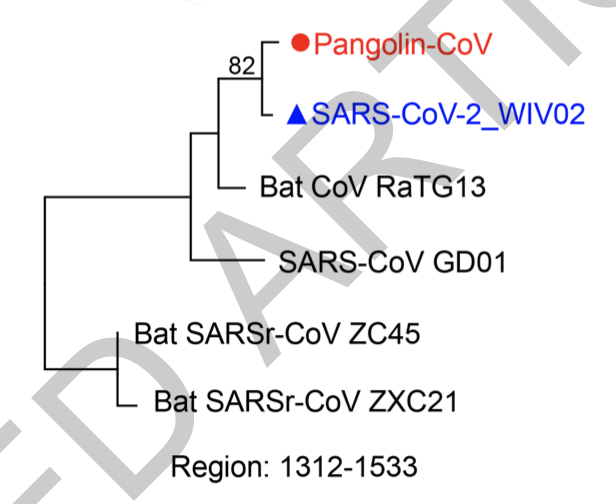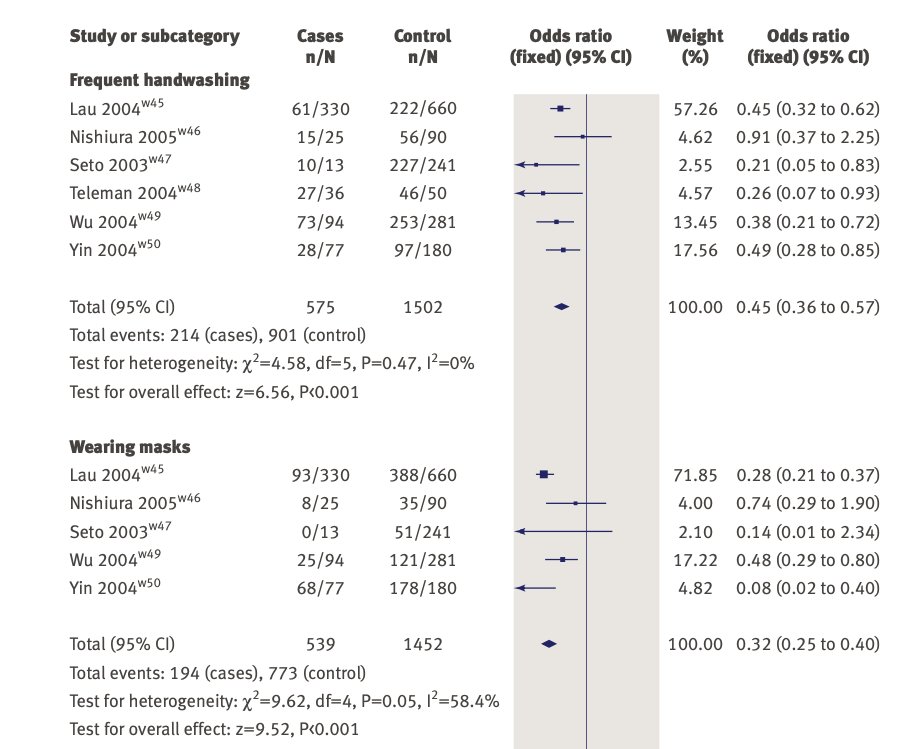
Today we report the use of base editing in patient-derived cells and in mice to correct the most common cause of progeria, the devastating rapid aging disease. Progeria is typically caused by a dominant negative C•G-to-T•A point mutation in LMNA. 1/11 drive.google.com/file/d/1oH4W0z… 
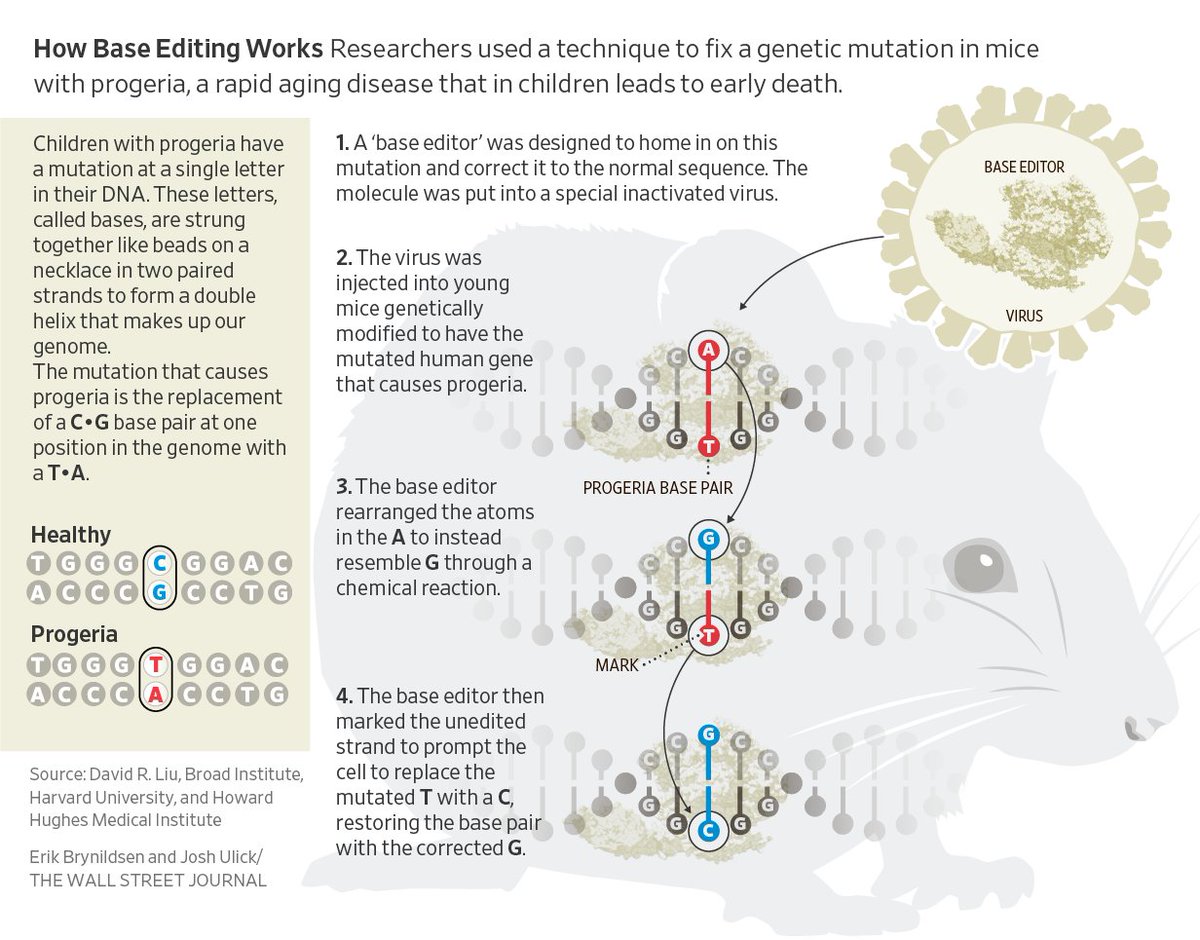
The mutation (discovered by @NIHDirector’s lab in 2003) results in progerin, a toxic protein that damages nuclei. So providing more healthy LMNA is not a solution, and cutting the mutated gene with nucleases is also challenging due to indel mixtures & similarity with wt LMNA.2/11 
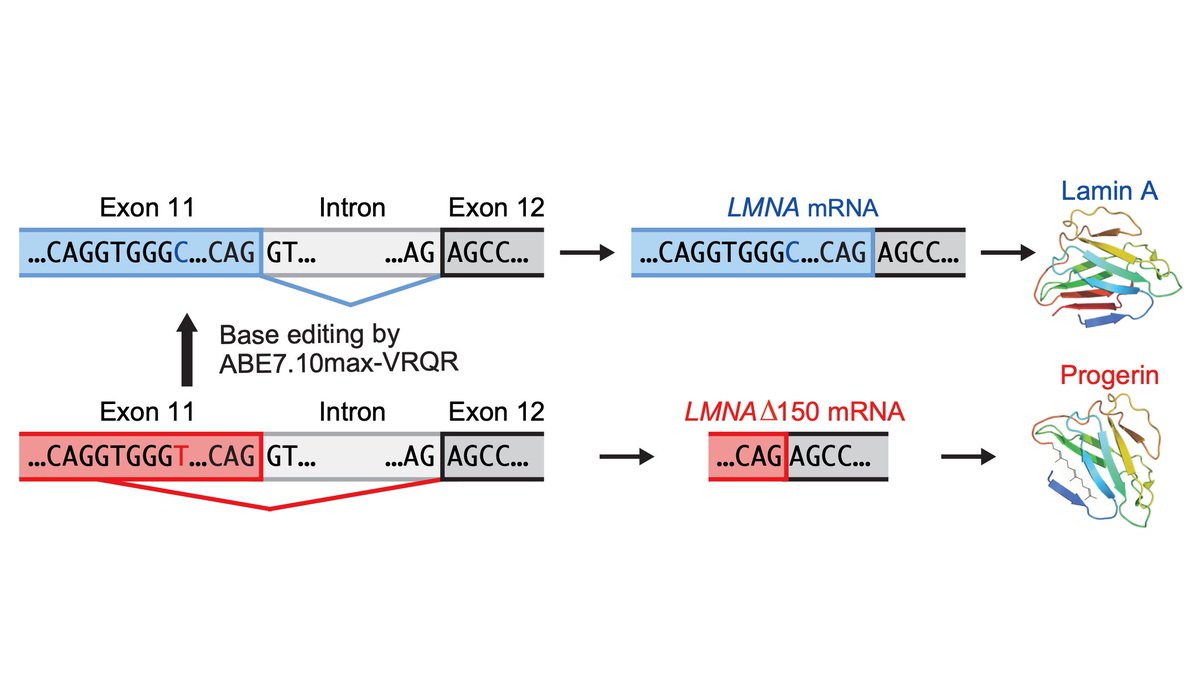
We used an adenine base editor to convert the T•A that causes progeria back to C•G at the key position in LMNA. Base editing in cells from progeria children corrected the mutation efficiently (~90%) with minimal indels or off-target edits, and restored nuclear morphology. 3/11 



We then performed in vivo base editing of a mouse model of human progeria developed by @NIHDirector’s lab. These mice have two copies of the mutated human LMNA gene, and develop heart disease, age rapidly, & die early (~7 mo.), resembling symptoms of the disease in children. 4/11 
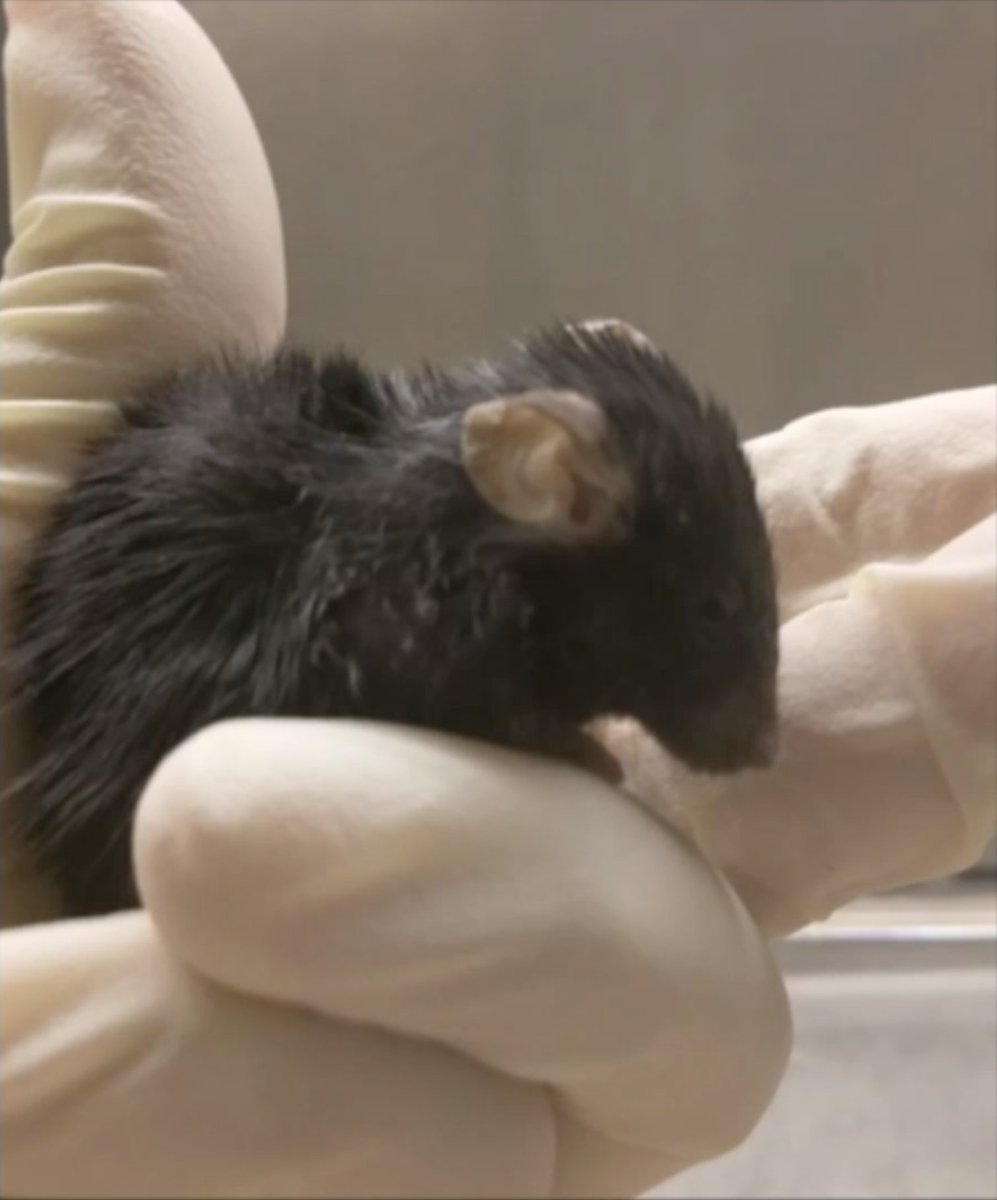
A single injection of AAV9 (10^11-10^12 total vg) encoding the base editor into the circulatory system of these mice resulted in ~10-60% correction of the mutation in various organs, corrected the RNA missplicing of LMNA, and reduced progerin protein levels in tissues. 5/11 
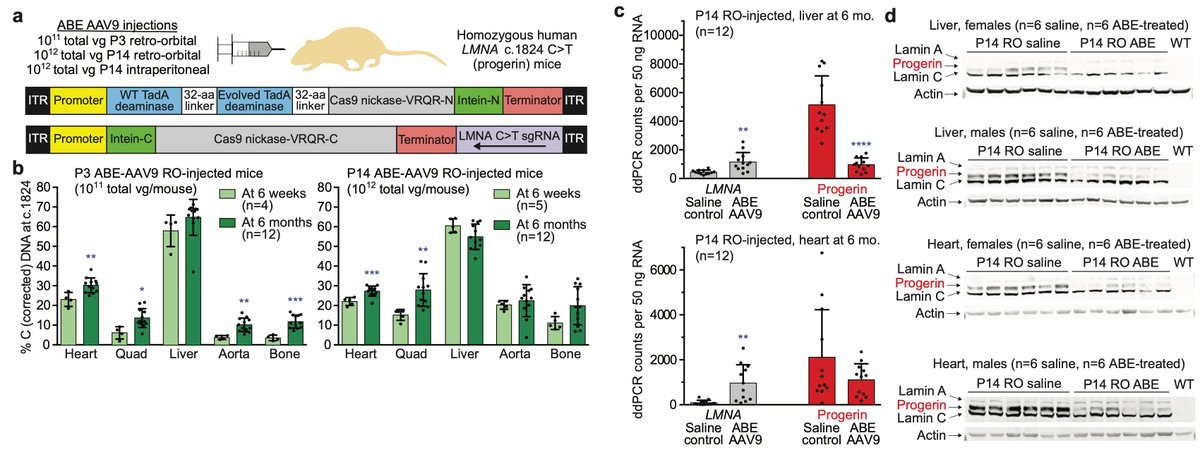
Base editor-treated mice showed profound rescue of aorta pathology. While saline-injected control progeria mice lose >90% of their vascular smooth muscle cells by 6 mo., and accumulate thick fibrosis around the aorta, base editor-treated aortas are normal in these respects. 6/11 
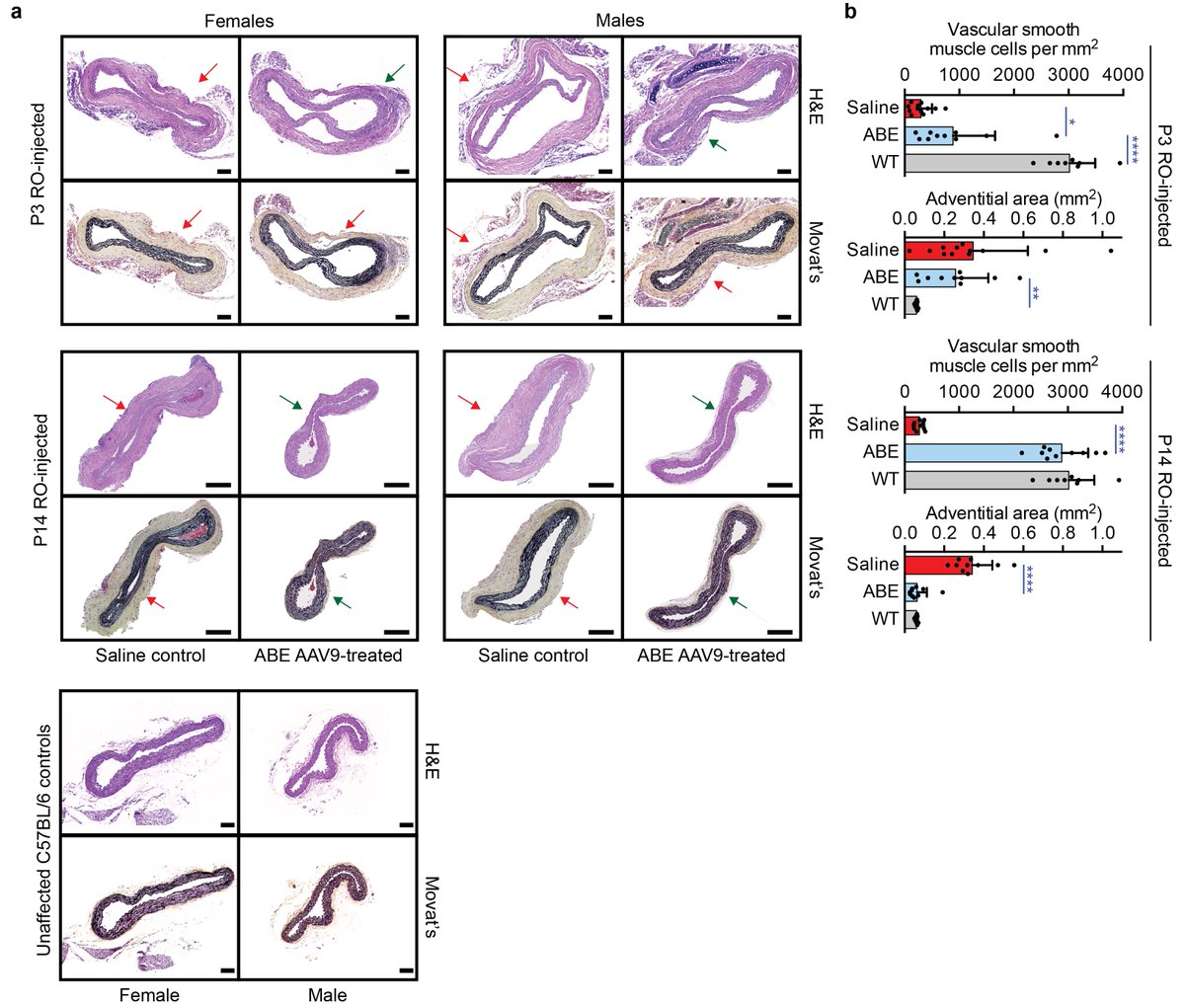
Consistent with this rescue of aorta pathology, aortas of base editor-treated mice at 6 mo. show little human progerin, but abundant normal human Lamin A protein in vascular smooth muscle cells by immunofluorescence. 7/11 

Control progeria mice had a median lifespan of 215 d. Mice injected with base editor at 14 d (corresponding roughly to a 5-year-old human in maturation level, though not necessarily in disease progression) had a median lifespan of 510 d, approaching “old age” in normal mice. 8/11 

Here are videos of an untreated progeria mouse at 7.5 mo. (near end-of-life), and of three base editor-treated progeria mice at 11 mo. old. You can see the treated mice have much more normal coats, activity levels, & little apparent spinal curvature. 9/11
dropbox.com/s/u88kois5py2z…
dropbox.com/s/u88kois5py2z…
These findings show that a one-time base editor injection can directly correct the mutation and rescue of several of the consequences of the disease. Additional work optimizing editor, delivery vector, dosing, & timing towards potential clinical use are underway. 10/11
This work was a collaboration with multiple institutions including @BroadInstitute, @NIH, @VanderbiltU, @Progeria; investigators including @NIHDirector, Jonathan Brown, Leslie Gordon; and researchers including lead authors @LukeKoblan and Mike Erdos. Congrats to the team! 11/11
• • •
Missing some Tweet in this thread? You can try to
force a refresh


